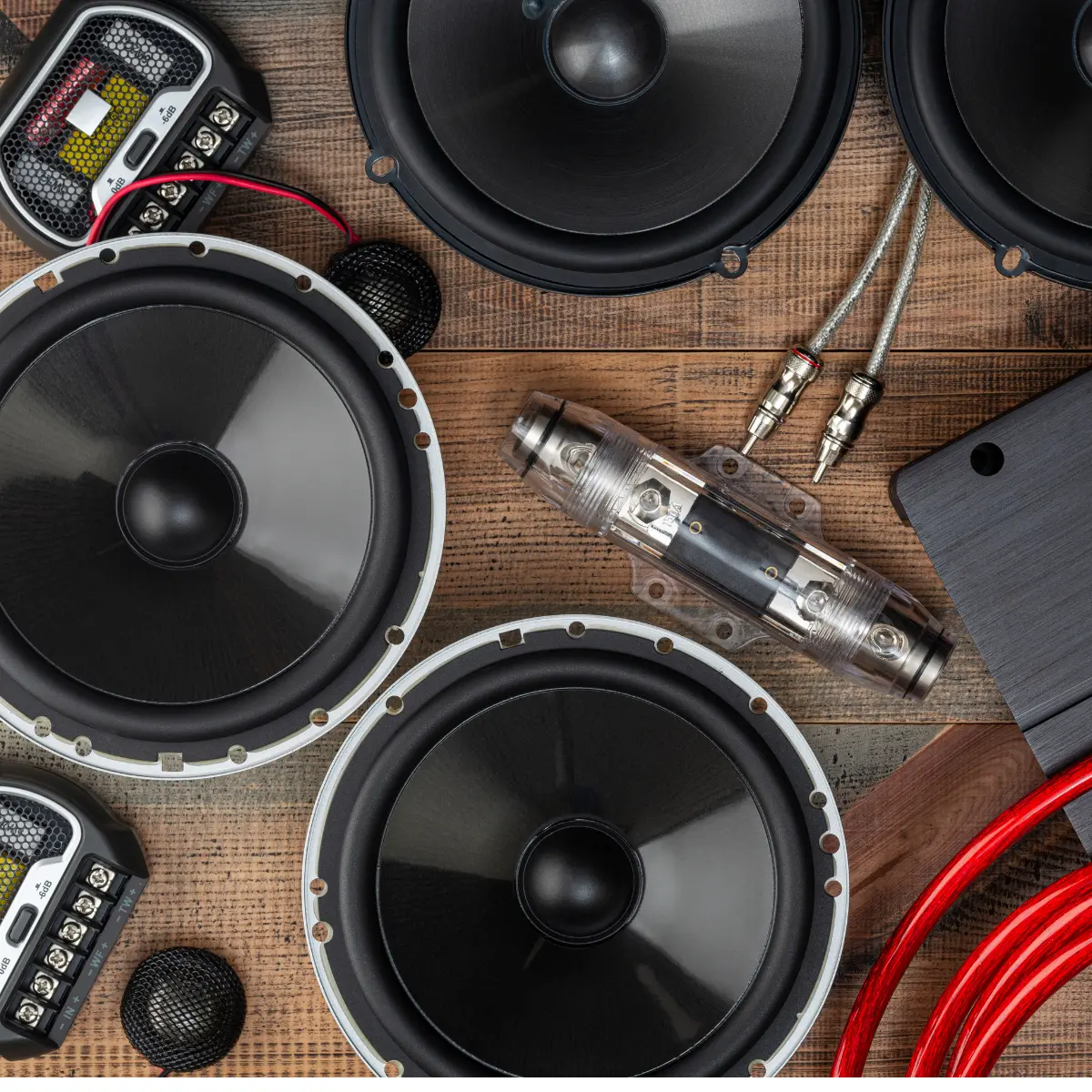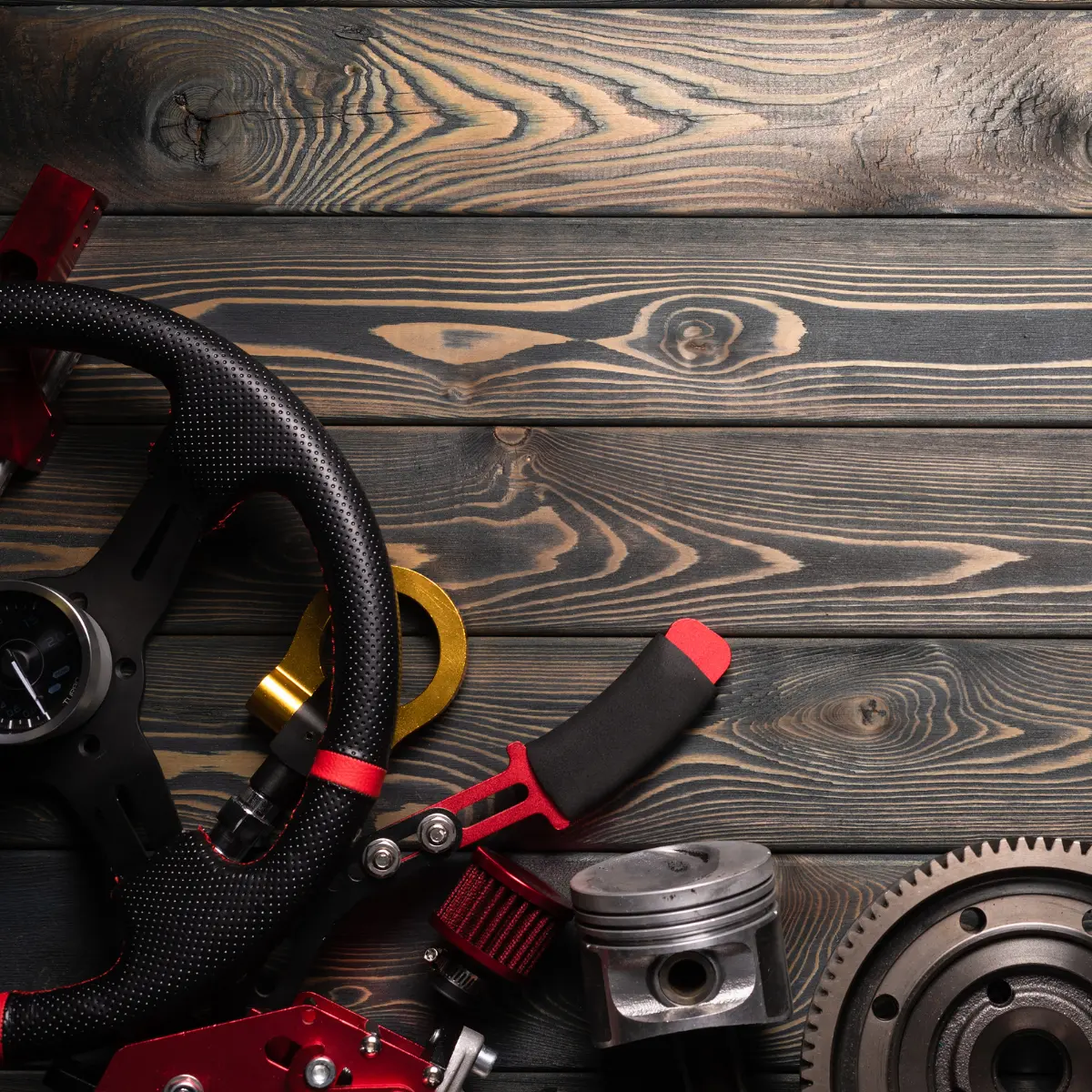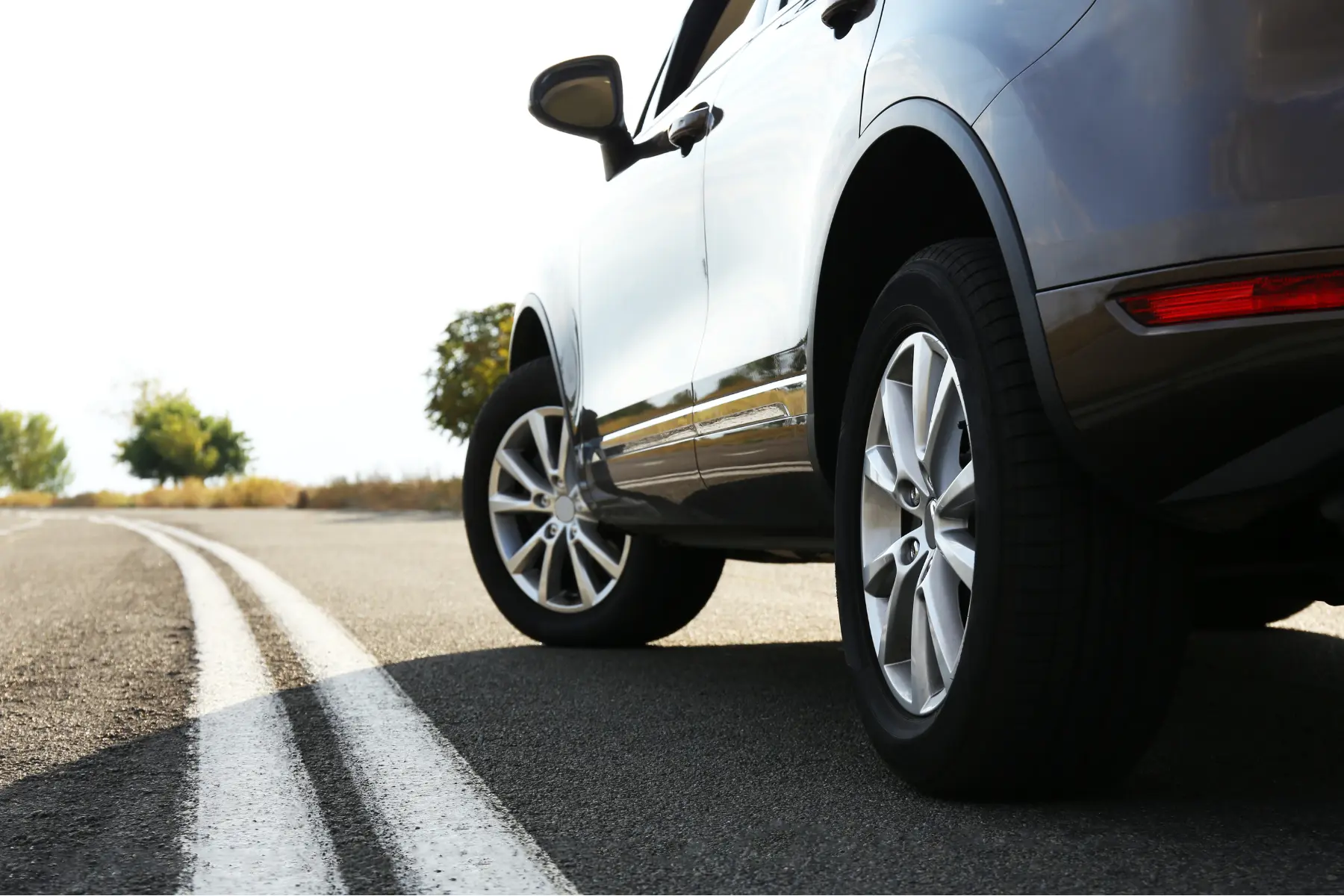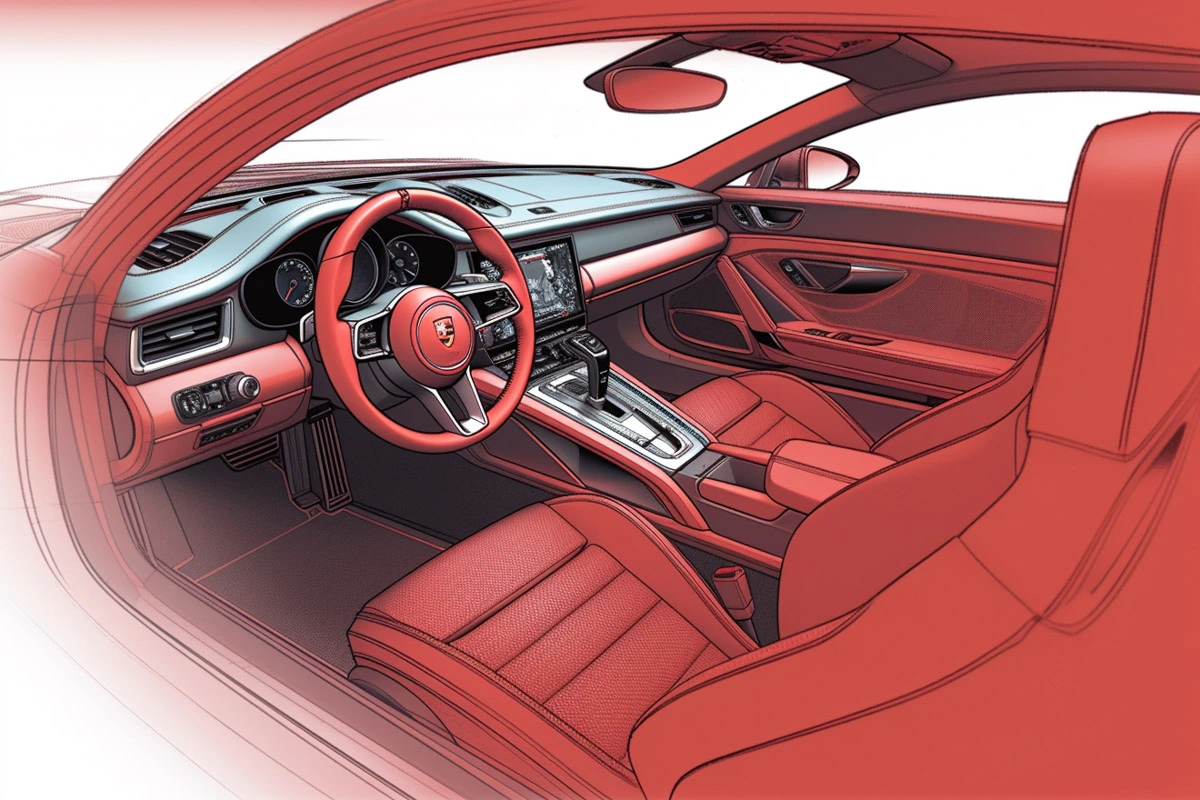The story of automotive accessories is a fascinating journey that mirrors the evolution of cars themselves. Initially, car accessories served purely functional purposes, designed to improve the performance and utility of the vehicle. Over time, as cars became more common and technology advanced, the focus shifted. People began to see their vehicles not just as means of transport, but as extensions of their personality and style. This shift sparked a transformation in the industry, leading to a wide range of automotive accessories trends. Today, accessories not only enhance functionality but also offer endless customization options, allowing car owners to personalize their vehicles in unique ways.

Early Days of Automotive Accessories
Introduction to Basic Accessories
In the early days of the automobile, accessories were minimal and largely practical. The first auto tech accessories were simple yet essential tools and devices designed to ensure the vehicle’s functionality. Items like hand-cranked starters, acetylene lamps, and basic tools for tire changes were considered necessary for any driver. These initial accessories laid the foundation for the diverse range of products we see today, demonstrating the initial focus on enhancing the car’s operational capabilities and ensuring safety and reliability on the road.
The Shift from Purely Functional to Aesthetic Enhancements
As automobiles became more accessible to the public, the perception of the car shifted from being a luxury item to a personal possession. This change sparked a new interest in aesthetic enhancements, leading to the development of accessories that added style and personal flair to vehicles. Chrome detailing, custom paint jobs, and decorative hubcaps became popular, allowing car owners to express their individuality through their vehicles. This period marked the beginning of the car as a canvas for personal expression, setting the stage for the vast customization options that would become available.
Role of Early Innovations in Vehicle Performance
High-performance tires, enhanced suspension systems, and improved braking mechanisms were developed, offering drivers better control and handling of their vehicles. These performance-enhancing accessories not only improved the driving experience but also contributed to the vehicle’s safety. The advancement of these accessories demonstrated the industry’s commitment to innovation and the continuous search for ways to make driving more enjoyable and safer.
Automobile Popularization on Accessory Development
As cars became more prevalent, the demand for accessories that could enhance the driving experience, provide additional functionality, and personalize the vehicle’s appearance grew exponentially. This led to an explosion in the variety of accessories available, from practical items like seat covers and floor mats to luxury additions such as leather upholstery and high-end audio systems. The widespread adoption of cars catalyzed the growth of the accessories market, making it an integral part of the automotive industry.
The Rise of Customization and Personalization
Vehicle Customization Options
Car enthusiasts began experimenting with various parts such as steering wheel covers, gear shift knobs, and custom exhaust systems. These DIY vehicle customization ideas were just the beginning of a trend that would grow in complexity and popularity. Owners started to see their vehicles as a blank canvas, ready to be tailored to their liking, reflecting their personality and style preferences through their cars.
The Influence of Car Culture on Accessory Varieties
As different car cultures developed around racing, off-roading, luxury, and classic cars, so did the accessories that catered to these interests. Racing enthusiasts sought performance-enhancing accessories like turbochargers and nitrous oxide systems, while off-road fans looked for durable modifications like lift kits and all-terrain tires. This diversification ensured that no matter the car culture, there were accessories and modifications to support and enhance the experience.
Personalization Trends Through the Decades
From the early days of automotive customization to the digital age, each era has seen unique trends that reflect the cultural zeitgeist and technological capabilities of the time. This evolution has not only enriched the automotive landscape but has also allowed for a more personalized driving experience, catering to the diverse preferences of car enthusiasts around the world. Here’s a deeper look into the car personalization trends through the decades:
- 1950s & 1960s: This period was characterized by an emphasis on flashy aesthetics, with the automotive world seeing an explosion in the use of chrome and the introduction of large, elaborate fins that became iconic symbols of the era. Custom paint jobs emerged as a popular form of personalization, allowing owners to express their unique style through their vehicles. Chrome accessories were added to highlight the sleek lines of cars, while the interiors saw the beginning of customization, with enthusiasts opting for custom upholstery to add a personal touch to their driving space.
- 1970s: The 1970s ushered in the era of muscle cars, characterized by their powerful engines and aggressive styling. Car enthusiasts began to focus on performance parts to increase horsepower and torque, making their vehicles not just look fast but genuinely capable of impressive speeds. Exterior personalization also took a new turn with the popularity of decals and stripes, allowing owners to give their cars a more distinctive and sporty look.
- 1980s & 1990s: As technology began to advance rapidly, car personalization trends shifted towards incorporating new technological features. The introduction of car audio systems revolutionized the way people experience music in their vehicles, making high-quality sound systems a coveted feature. The era also saw the first car phones, marking the beginning of the integration of communication technology into automobiles. Additionally, vehicle safety technology started to become a significant aspect of car design and personalization, reflecting growing concerns over passenger safety.
- 2000s: The new millennium brought with it the rise of digital technology, profoundly impacting car personalization. GPS systems and advanced infotainment systems became standard, allowing for a more connected and informed driving experience. Custom LED lighting also emerged as a popular trend, offering a modern way to personalize the appearance of cars and enhance their aesthetic appeal at night. During this time, digital technology became increasingly prevalent in many aspects of daily life, including our interactions with cars.
- 2010s & 2020s: The most recent decades have seen a surge in eco-friendly automotive technologies, reflecting a societal shift towards sustainability and environmental consciousness. Personalization in this era has extended beyond physical modifications to include digital interfaces and software, with connectivity and smart accessories becoming integral to the connected car experience. This period is characterized by the blending of technology and sustainability, showcasing the automotive industry’s adaptation to the digital age and the global push for eco-friendly transportation solutions.
The future of automotive customization will likely see further integration of technology and sustainability, as drivers seek to make their vehicles more personal, efficient, and connected. This journey through the decades highlights the dynamic relationship between car enthusiasts and the vehicles they cherish, showcasing the continual innovation and creativity that drive the automotive world forward.

How Manufacturers Responded to the Customization Wave
From offering a wider range of colors and trims to integrating advanced technological features that allow for personalization of the driving experience, manufacturers have embraced the customization trend. They have also partnered with aftermarket companies to provide customers with a broader range of innovative car gadgets and customization options, further blurring the line between standard and custom in the automotive world.
Technological Advancements in Automotive Accessories
Milestones in Automotive Tech Advancements
Key milestones include the introduction of the electric starter, replacing the manual crank, and the evolution of fuel injection systems, which improved efficiency and performance. The advent of computerized diagnostics tools revolutionized maintenance, allowing for precise and timely repairs. These advancements were not just steps forward in convenience and efficiency; they represented leaps toward creating vehicles that were safer, more reliable, and more enjoyable to drive.
Introduction of Electronics in Car Accessories
Suddenly, vehicles were not just mechanical beasts of burden but sophisticated machines capable of offering comfort, entertainment, and connectivity. The first car radios, followed by the development of air conditioning systems, electric windows, and navigation systems, were revolutionary. These electronic accessories significantly enhanced the driving experience, making long journeys more comfortable and driving more accessible to a broader range of people.
The Evolution of Infotainment Systems
Infotainment systems have evolved from basic car radios to complex systems that integrate audio, video, navigation, and connectivity options. This evolution reflects the increasing importance of digital technology in our lives. Modern systems offer touch-screen interfaces, voice recognition, and connectivity with smartphones, providing access to apps, music, and real-time traffic updates. This integration of technology has made the infotainment system a central hub for innovative car gadgets, transforming how drivers and passengers interact with their vehicles and the outside world.
Safety Technologies as Standard Accessories
From systems that help maintain control during emergency maneuvers to sensors that alert drivers to potential hazards, these technologies play a crucial role in preventing accidents and reducing the severity of collisions. Here’s an in-depth look at some of the key safety technologies that have become commonplace in many vehicles:
- Anti-lock Braking System (ABS): The ABS is a critical safety feature that prevents the wheels of a vehicle from locking up during an emergency braking situation, allowing the driver to maintain steering control. This system works by monitoring the speed of each wheel and automatically adjusting the brake fluid pressure to keep the wheels spinning, thus preventing skidding and enabling the driver to steer away from obstacles. The introduction of ABS has significantly improved driver safety by reducing the number of accidents caused by loss of control during sudden stops.
- Electronic Stability Control (ESC): ESC enhances a vehicle’s stability by automatically detecting and reducing the loss of traction (skidding). When the system perceives that the vehicle is veering off its intended path, it applies the brakes to individual wheels and, if necessary, adjusts engine power to help steer the vehicle back on course. To assist prevent rollovers and other kinds of accidents, this technology is especially helpful in slick circumstances or when making sudden maneuvers.
- Airbags: Airbags are designed to deploy in the event of a collision, providing an essential cushion that significantly reduces the risk of serious injuries to the vehicle’s occupants. They work in conjunction with seat belts to protect individuals from striking the vehicle’s interior or being ejected during a crash. Modern vehicles are equipped with multiple airbags placed in strategic locations around the cabin, including front, side, and curtain airbags, offering comprehensive protection in a wide range of impact scenarios.
- Rearview Cameras: Rearview cameras offer drivers a clear view of the area directly behind their vehicle, making reversing into parking spaces or navigating tight spots safer and easier. This technology helps eliminate the blind spot behind the vehicle, reducing the risk of backing into objects, vehicles, and even pedestrians, therefore preventing accidents and making driving more accessible for everyone.
- Lane Departure Warning Systems: These systems alert drivers when their vehicle begins to drift out of its designated lane without signaling, helping to prevent accidents caused by inattention or drowsiness. By monitoring lane markings, the system can detect unintended lane departures and alert the driver through visual, auditory, or haptic signals, encouraging corrective action to maintain lane position.
- Automatic Emergency Braking (AEB): AEB systems are designed to prevent collisions by automatically applying the brakes when a potential collision is detected and the driver has not taken action to avoid it. This technology uses sensors to monitor the vehicle’s speed and the distance to objects ahead, intervening to reduce the severity of crashes or avoid them altogether, especially at lower speeds where many accidents occur.
As vehicle technology continues to advance, these safety features are becoming more sophisticated, further enhancing their effectiveness in protecting lives on the road. The widespread adoption of these technologies as standard equipment is a testament to the automotive industry’s prioritization of safety, offering peace of mind to drivers and setting a new standard in vehicle safety that benefits everyone on the road.

The evolution of automotive accessories reflects a broader shift in our relationship with our vehicles. No longer just a means of transportation, cars have become extensions of our digital lives, platforms for personal expression, and guardians of our safety on the road. As we move forward, the synergy between automotive design, technology, and consumer demand will continue to drive the development of essential accessories for your car that enrich our driving experience. In this dynamic landscape, the possibilities are as limitless as the road ahead.




